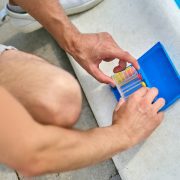
Pool Shock 101: A Homeowner’s Guide to Different Pool Shock Methods
Discover the various methods to shock your swimming pool, understand their benefits, and learn how to choose the right one for your pool maintenance needs.
Regularly shocking your swimming pool is an essential part of proper pool maintenance. Pool shock treatments help eliminate contaminants, restore water clarity, and maintain a safe and healthy swimming environment. As a homeowner, understanding the different pool shock methods available can help you choose the most suitable one for your pool’s unique needs. In this article, we will explore the various ways to shock your pool and provide guidance on selecting the best method for your pool maintenance routine.
Different Methods to Shock Your Swimming Pool
- Calcium Hypochlorite (Cal-Hypo) Shock
Calcium hypochlorite, also known as Cal-Hypo, is a popular and powerful pool shock method. Cal-Hypo contains high levels of chlorine, typically around 65-75%, making it effective at killing bacteria, algae, and other organic contaminants.
Pros:
- Strong oxidizing properties
- Effective against a wide range of contaminants
- Available in various strengths
Cons:
- Can increase water hardness and calcium levels
- Requires pre-dissolving in water before application
- Must be added at night to prevent sunlight from breaking down the active chlorine
- Dichloro-S-Triazinetrione (Dichlor) Shock
Dichlor shock is a stabilized form of chlorine that contains cyanuric acid, which protects the chlorine from being broken down by sunlight. This makes it an excellent choice for outdoor pools that receive a lot of sun exposure.
Pros:
- Stabilized chlorine resists UV degradation
- Fast-dissolving and easy to apply
- Compatible with most pool types
Cons:
- May increase cyanuric acid levels with repeated use
- Lower chlorine content compared to Cal-Hypo
- More expensive than other shock methods
- Potassium Monopersulfate (Non-Chlorine) Shock
Potassium monopersulfate, also known as non-chlorine shock or MPS, is an oxygen-based shock treatment that does not contain chlorine. This type of shock is ideal for those who want to avoid using chlorine or need a shock treatment compatible with alternative sanitizers like bromine or biguanide.
Pros:
- No chlorine odor
- Compatible with alternative sanitizers
- Can be used during the day, as it is not affected by sunlight
Cons:
- Less effective against algae and bacteria than chlorine-based shocks
- May be less compatible with certain pool surfaces or equipment
- More expensive than chlorine-based shock options
- Liquid Chlorine Shock
Liquid chlorine, or sodium hypochlorite, is another option for shocking your pool. This method is easy to apply, as it can be poured directly into the pool without the need for pre-dissolving.
Pros:
- Easy to apply, no pre-dissolving required
- Works quickly and effectively
- Less likely to increase calcium hardness
Cons:
- Lower concentration of chlorine compared to Cal-Hypo
- Can degrade quickly if not stored properly
- Can be more expensive than other shock methods
How to Choose the Right Shock Method for Your Pool
To determine the best pool shock method for your needs, consider the following factors:
- Pool Type: Consider your pool’s surface material, as some shock treatments may be less compatible with certain surfaces or equipment.
- Sanitizing System: If you use an alternative sanitizer, like bromine or biguanide, choose a shock method compatible with your system, such as potassium monopersulfate.
- Sun Exposure: For outdoor pools with significant sun exposure, consider a stabilized shock treatment like Dichlor or a non-chlorine shock that is not affected by sunlight.
- Existing Water Chemistry: Analyze your pool’s current water chemistry, such as calcium hardness and cyanuric acid levels, and choose a shock treatment that will not exacerbate existing imbalances.
- Budget: Consider your budget and the cost of the shock treatments available, as some methods may be more expensive than others.
- Frequency of Use: If you use your pool frequently or host large gatherings, a stronger shock treatment like Cal-Hypo may be more appropriate to ensure proper sanitization.
Understanding the various pool shock methods available is crucial for any homeowner looking to maintain a clean and safe swimming environment. By considering your pool type, sanitizing system, sun exposure, existing water chemistry, budget, and usage, you can make an informed decision about which pool shock method best suits your needs. Regularly shocking your pool with the appropriate method will help you eliminate contaminants, maintain water clarity, and enjoy a healthy and enjoyable swimming experience.




